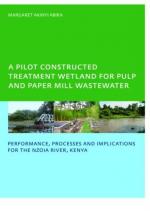|
This section contains 1,428 words (approx. 5 pages at 300 words per page) |

|
Pulp and paper mills take wood and transform the raw product into paper. Hardwood logs (beech, birch, and maple) and softwoods (pine, spruce, and fir) are harvested from managed forestlands or purchased from local farms and timberlands across the world and are transported to mills for processing. Hardwoods are more dense, shorter fibered, and slower growing. Softwoods are less dense, longer fibered, and faster growing.
Today, the process is mainly done with high tech, sophisticated machinery. Wood products, which consist of lignin (30 percent), fiber (50 percent), and other materialscarbohydrates, proteins, fats, turpentine, resins, etc., (20 percent) are transformed into paper consisting of fiber, and additives--clay, titanium dioxide, calcium carbonate, water, rosin, alum, starches, gums, dyes, synthetic polymers, and pigments. Wood is about 50 percent cellulose fiber. The structure of paper is a tightly bonded web of cellulose fibers. About 80 percent of a typical printing paper...
|
This section contains 1,428 words (approx. 5 pages at 300 words per page) |

|


